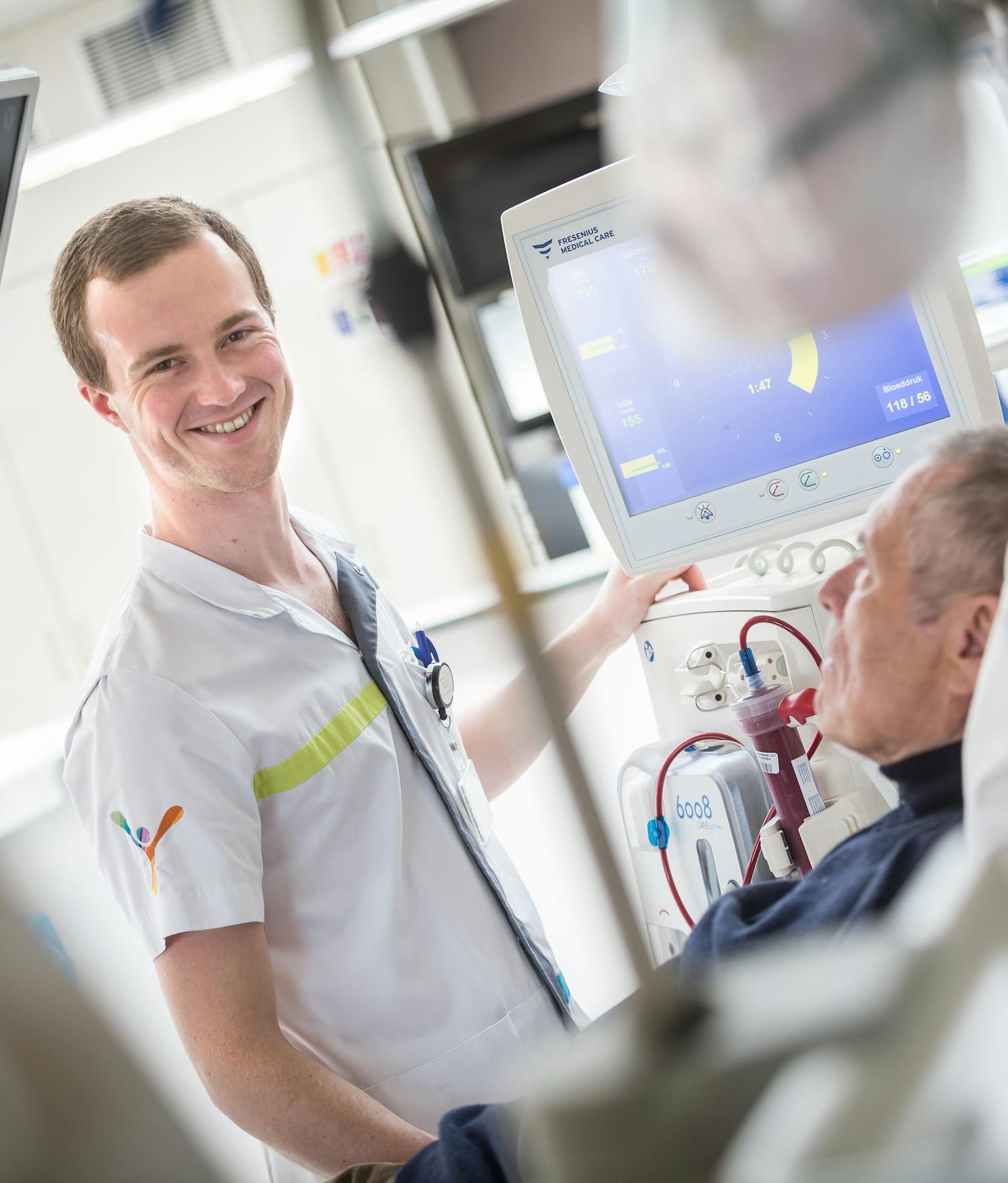What is therapeutic plasmapheresis?
Therapeutic plasmapheresis is a blood purification technique in which the patient's own plasma is removed (but not the blood cells) and replaced by human donor plasma or artificial plasma substitutes. Plasmapheresis is used to remove harmful proteins or antibodies.
Some examples of diseases where plasmapheresis can be used:
- Myasthenia gravis
- Acute inflammatory demyelinating polyneuropathy (AIDP) or Guillain-Barré syndrome
- Chronic inflammatory demyelinating polyneuropathy (CIDP)
- Granulomatosis with polyangiitis or Wegener's disease
- Goodpasture's syndrome
- Cryoglobulinaemia
- Hyperviscosity syndromes (such as Waldenström's disease or Kahler's disease)
What is therapeutic plasma exchange?
Therapeutic plasma exchange is similar to therapeutic plasmapheresis. However, the plasma exchange is not (only) about removing harmful proteins, but mainly about administering necessary proteins.
Some examples of diseases where plasma exchange can be used:
- Granulomatosis with polyangiitis or Wegener's disease with pulmonary haemorrhages
- Goodpasture's disease with pulmonary haemorrhage
- Thrombotic Thrombocytopenic Purpura (TTP)
- Atypical haemolytic uraemic syndrome (aHUS)
